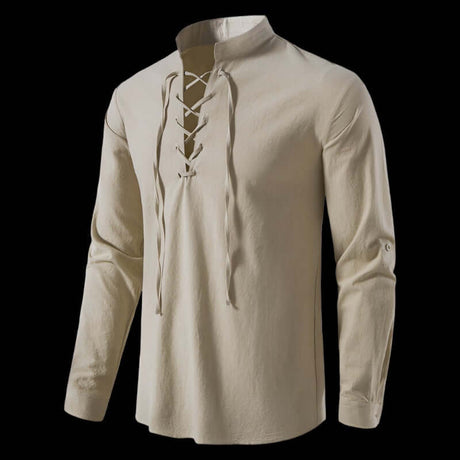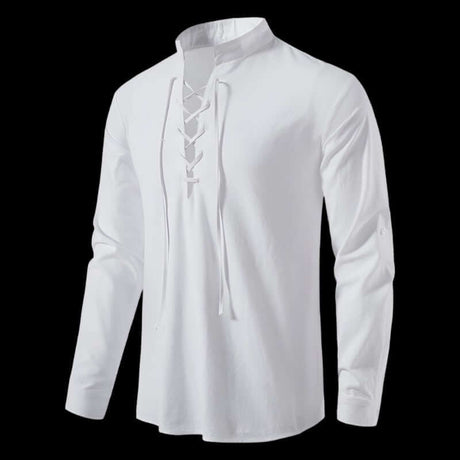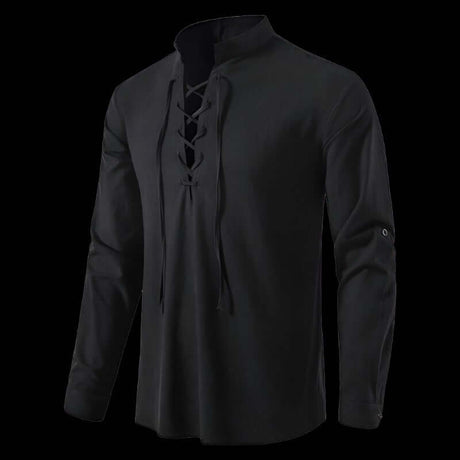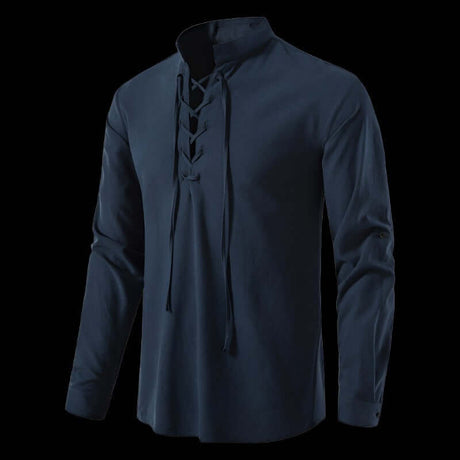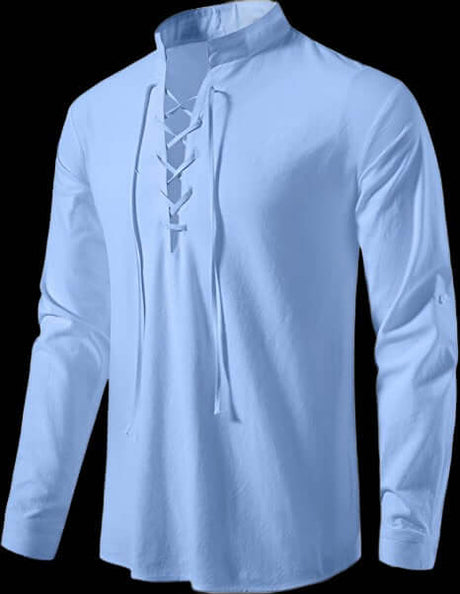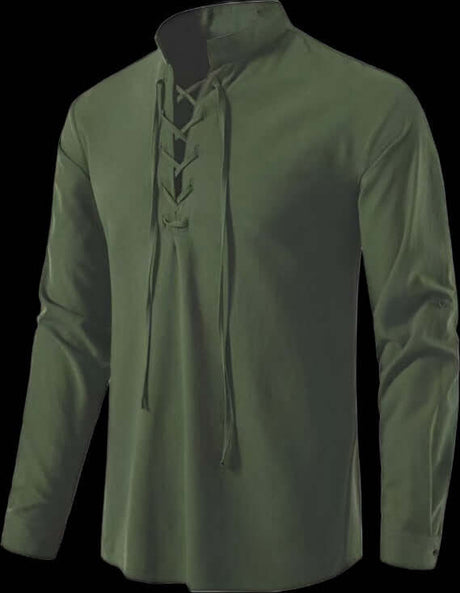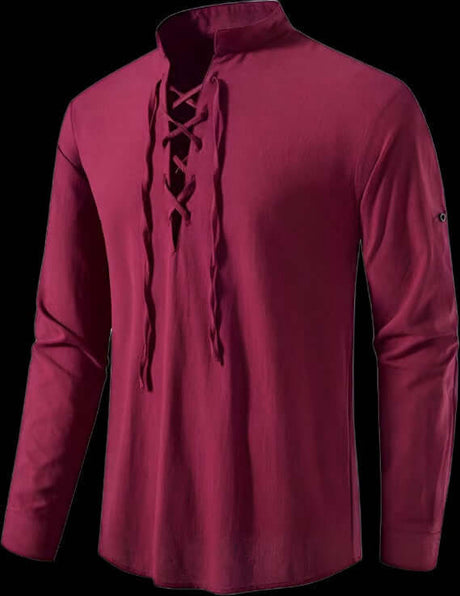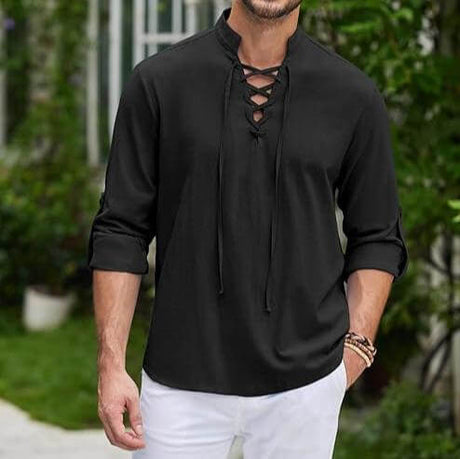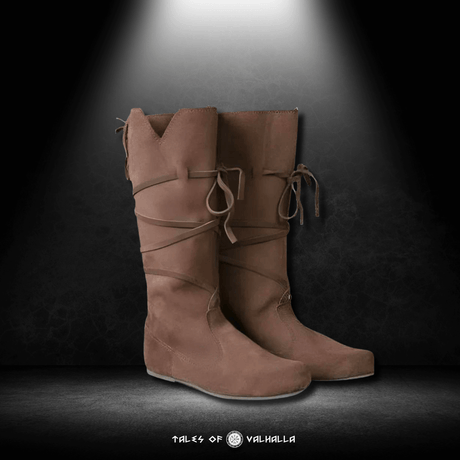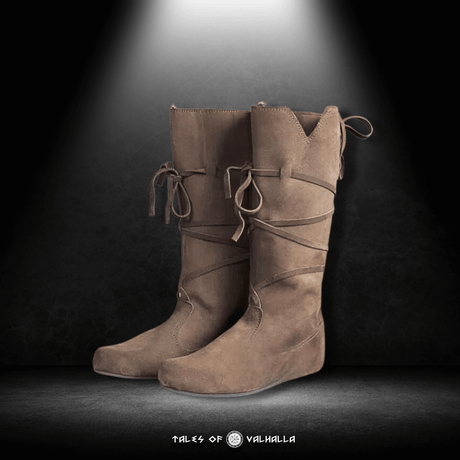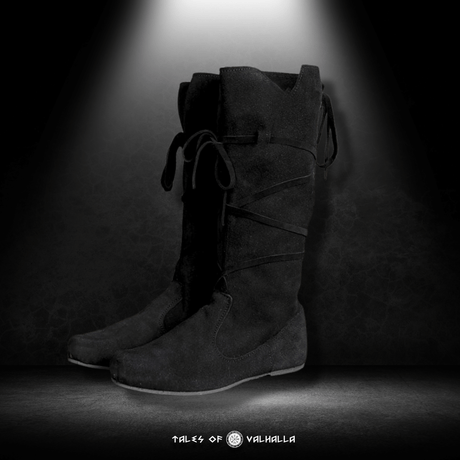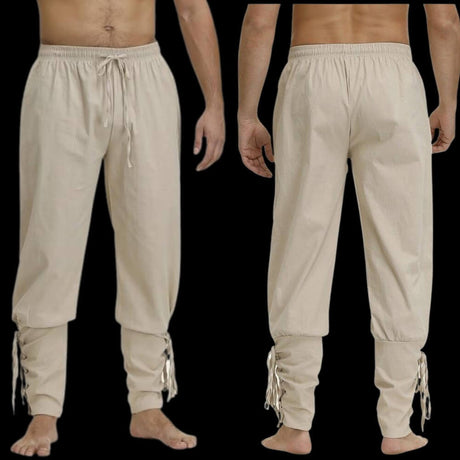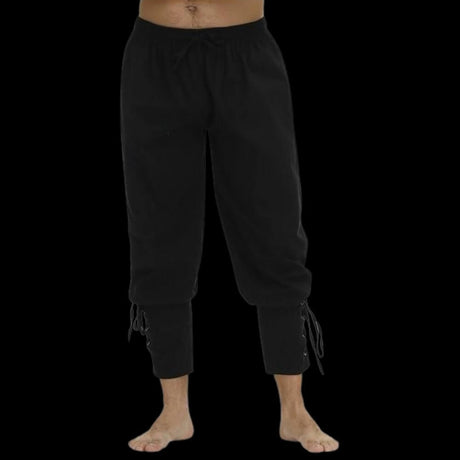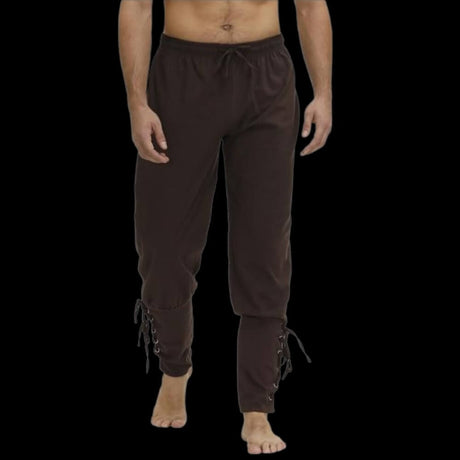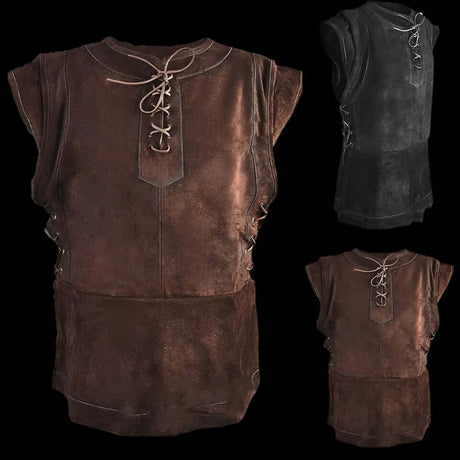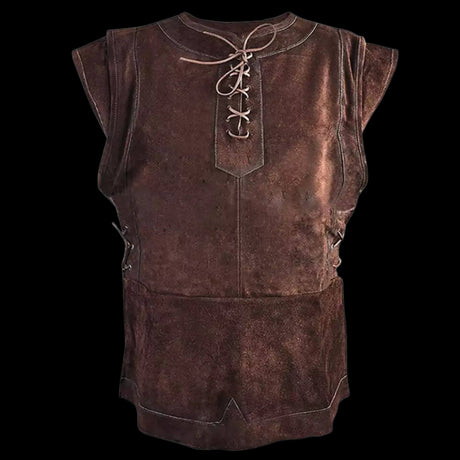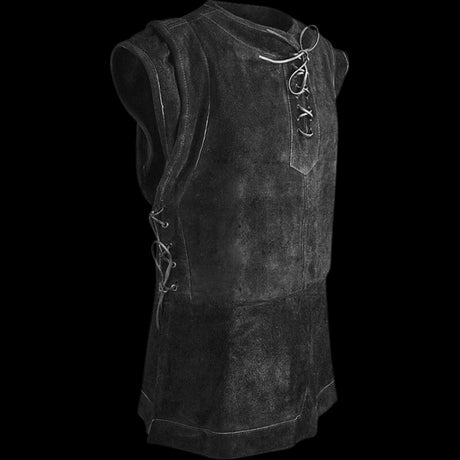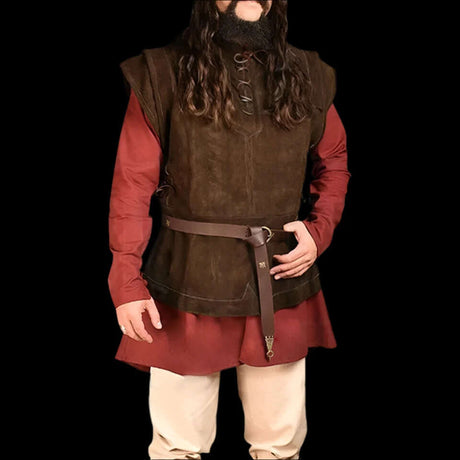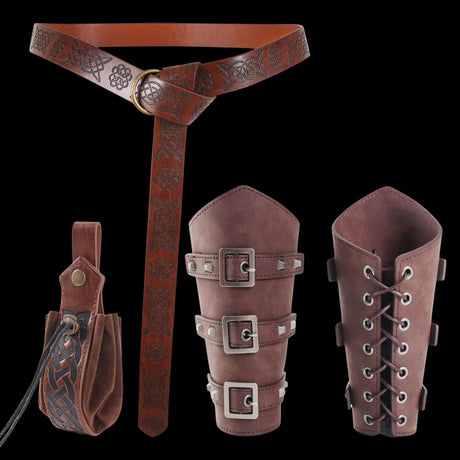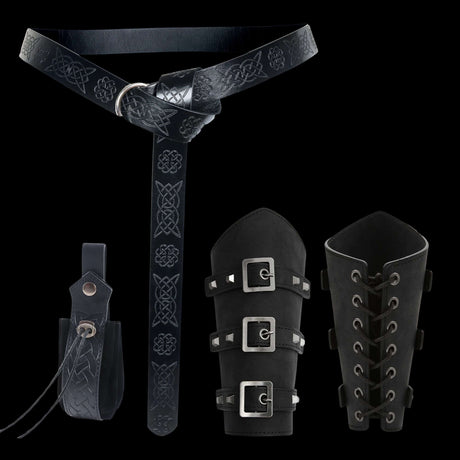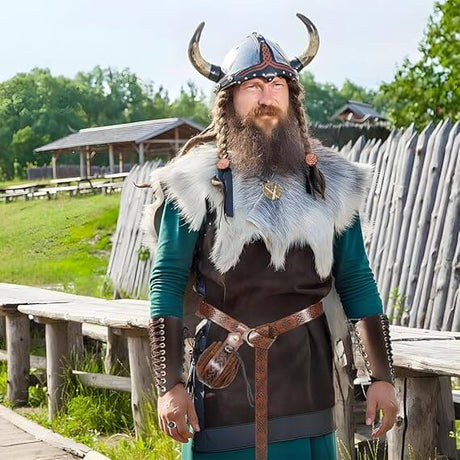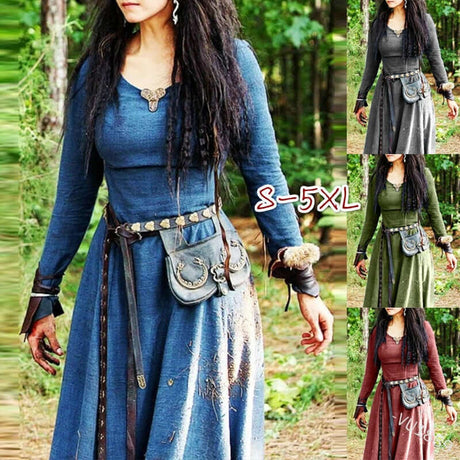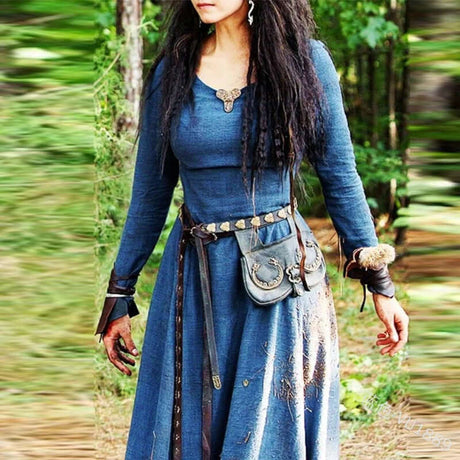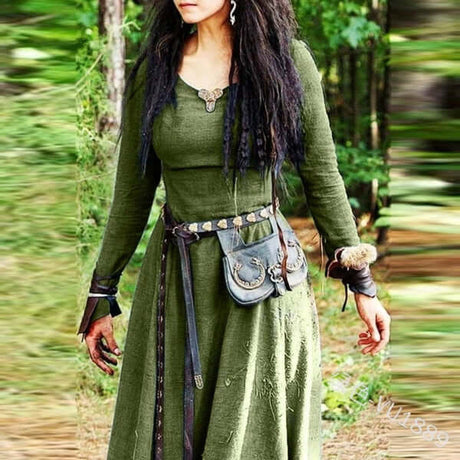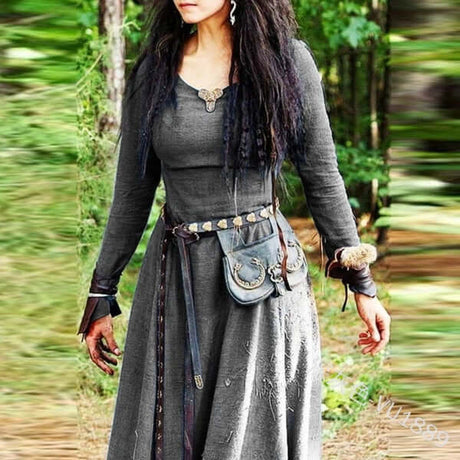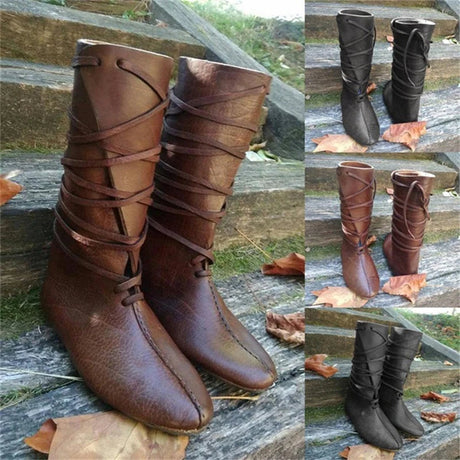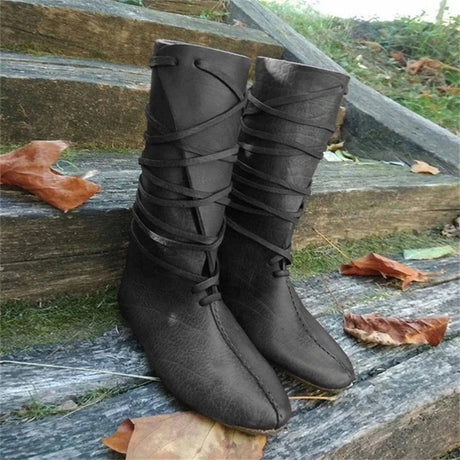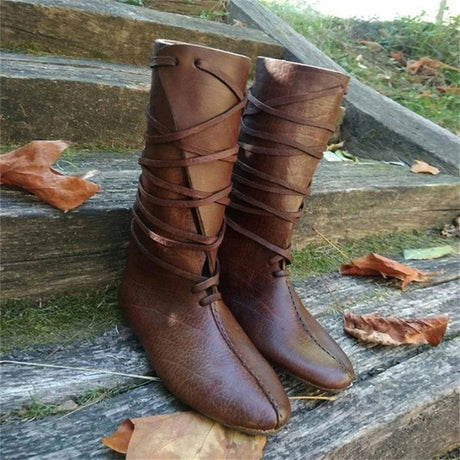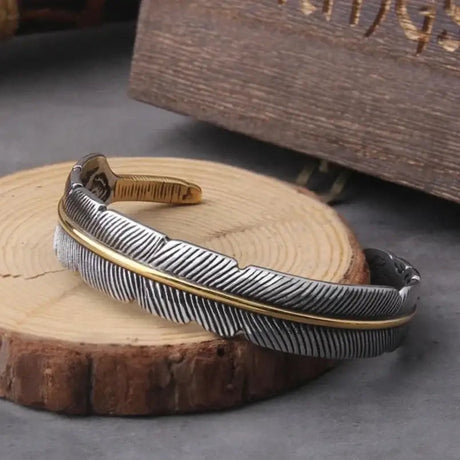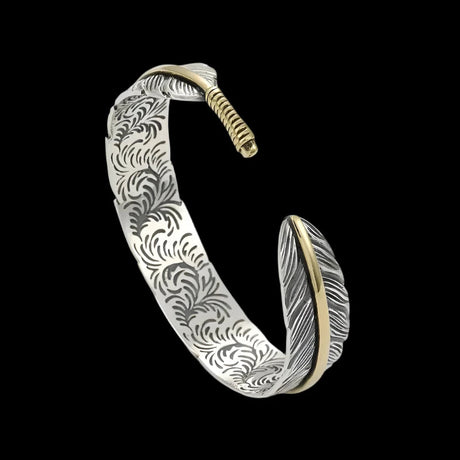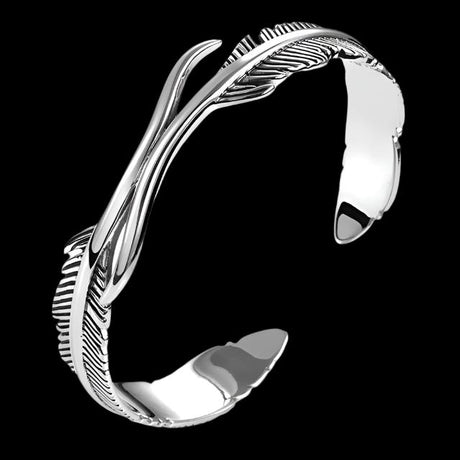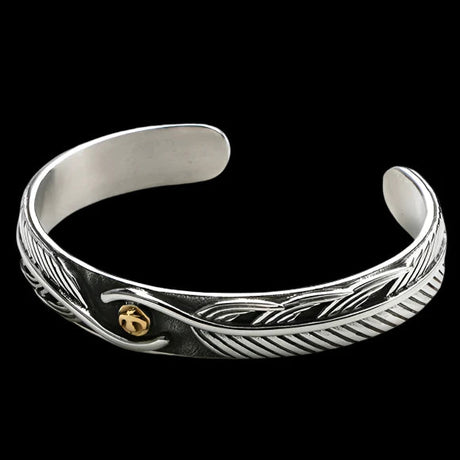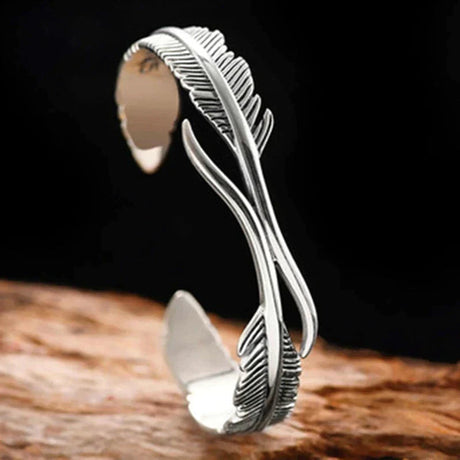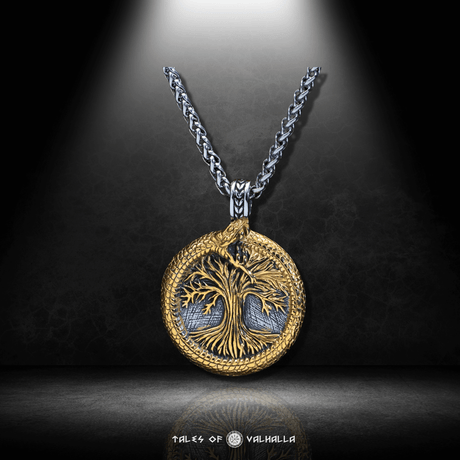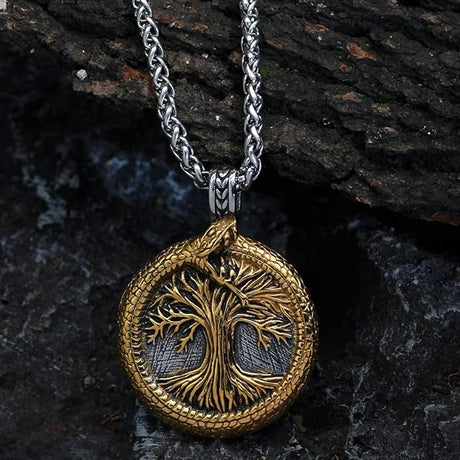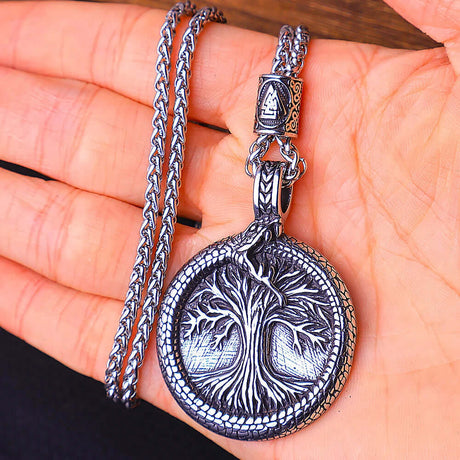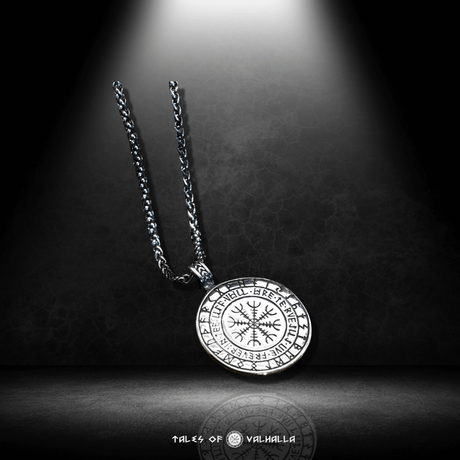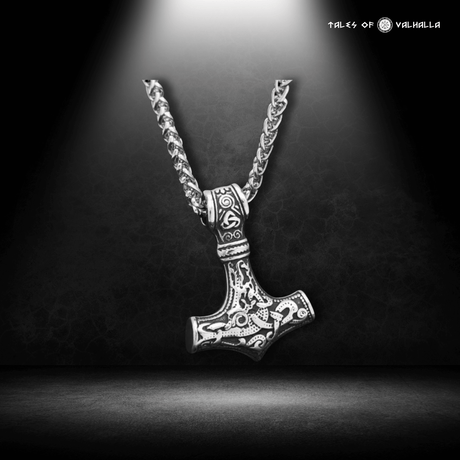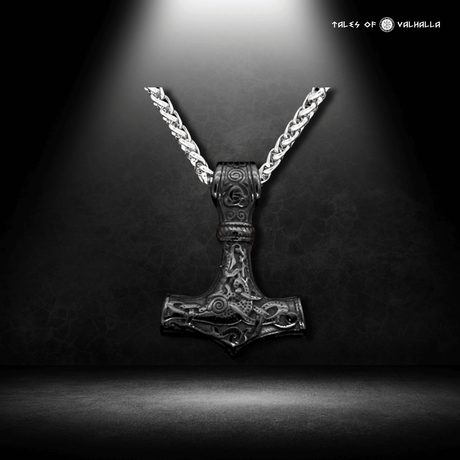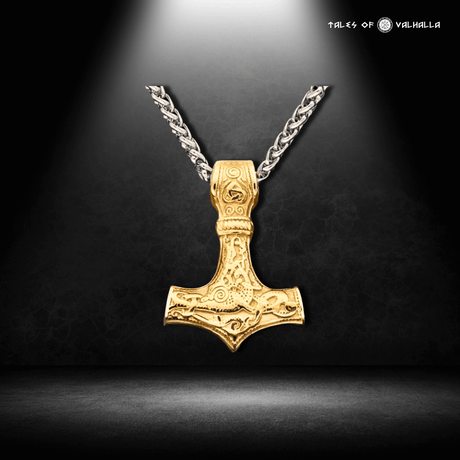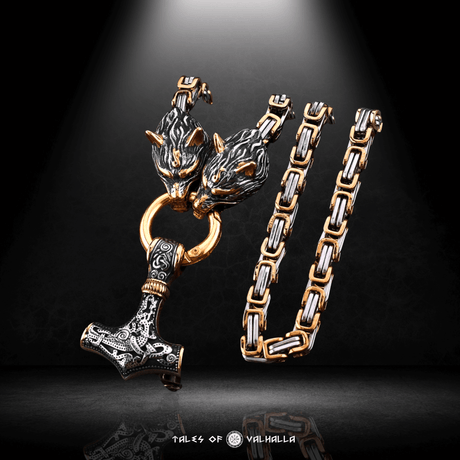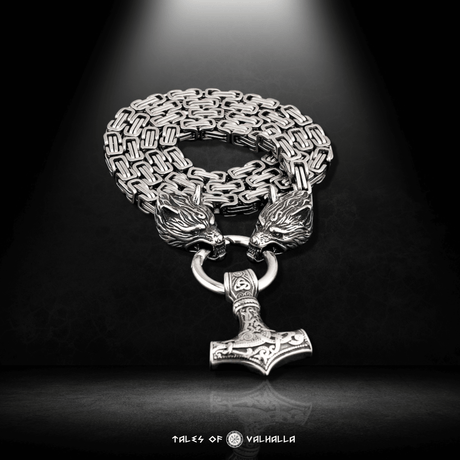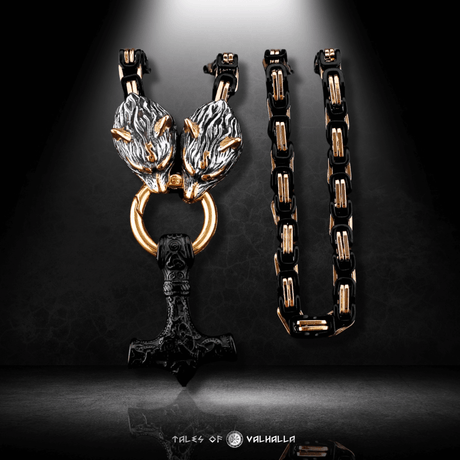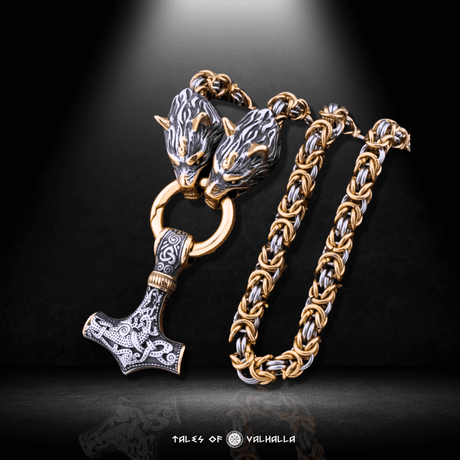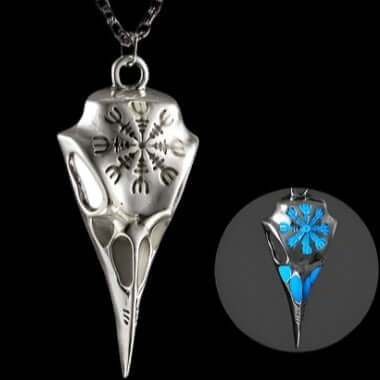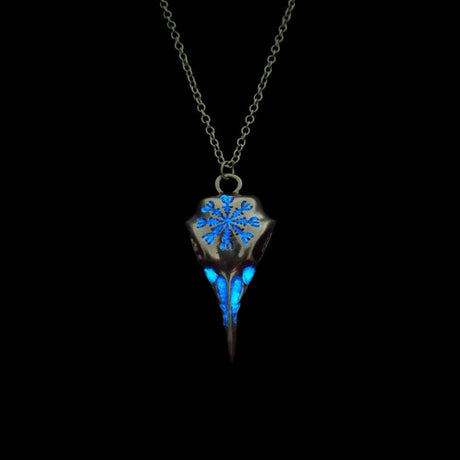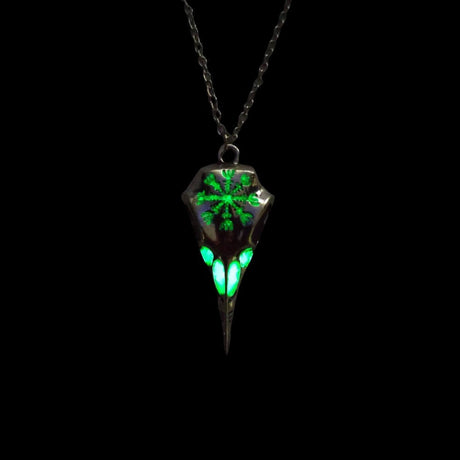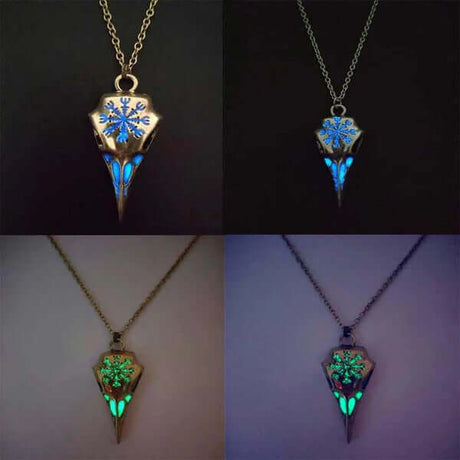The image of the Viking is enduring: a formidable warrior, longship cleaving through icy seas, often crowned with a cascade of wild, flowing hair. Popular culture frequently paints these Norse seafarers with a broad brush, often defaulting to a stereotype of flaxen blonde. But what about other hues? Specifically, did Vikings have red hair? This question sparks considerable debate and curiosity, inviting us to delve deeper than surface-level assumptions and explore the fascinating genetic, historical, and cultural tapestry of the Viking Age.
This isn't just a simple yes or no. The answer to "Did Vikings have red hair?" unveils a more complex and diverse reality than often portrayed. We'll journey through ancient texts, examine archaeological clues, consider genetic evidence, and even touch upon the cultural perceptions surrounding this striking hair color. Prepare to have some myths untangled as we uncover the fiery truth about the locks of the legendary Norsemen.
Beyond the Blonde Stereotype: The Spectrum of Viking Hair Colors
Before we specifically address red hair, it's crucial to dismantle the pervasive myth that all Vikings were blonde. While blonde hair was undoubtedly present and perhaps even prized in Viking society, it was far from the only hair color.

Beyond the Blonde Stereotype: The Spectrum of Viking Hair Colors
The "Blonde Viking" Myth: A Persistent Image
The stereotype of the uniformly blonde Viking likely stems from a combination of factors:
- Early Romanticized Depictions: 19th and early 20th-century art and literature often romanticized Vikings, frequently portraying them with idealized Nordic features, including blonde hair and blue eyes.
- Nazi Misappropriation: Tragically, Nazi ideology co-opted Norse imagery, including the blonde, blue-eyed ideal, to promote their racist theories. This association, though entirely false and abhorrent, has unfortunately lingered in some corners of popular consciousness.
- Selective Focus: Modern media sometimes defaults to this stereotype for visual shorthand, even though it doesn't reflect the full historical picture.
The Reality: A Diverse Genetic Palette
The Viking Age Scandinavians were a genetically diverse people, a result of their own regional variations and extensive interactions (through trade, raiding, and settlement) with other cultures across Europe. This means their physical appearance, including hair color, would have varied significantly.
- Archaeological Evidence: While hair rarely survives well in the archaeological record, some preserved human remains from Viking Age burials have yielded hair samples showing a range of colors, including browns and even darker shades.
- Written Descriptions: Contemporary accounts by those who encountered Vikings, while sometimes biased, occasionally describe variations in appearance.
- Modern Genetics: Studies of modern Scandinavian populations reveal a spectrum of natural hair colors, providing indirect evidence of historical diversity. The idea that an entire, widespread group of people like the Vikings would be uniformly one hair color is simply not genetically plausible.
So, when asking "Did Vikings have red hair?", we must approach it with the understanding that their hair color landscape was much richer than just blonde.
Searching for Fire: Evidence for Red-Haired Vikings
Now, let's specifically address the question of red hair among Vikings. The evidence, while not always direct or overwhelming, certainly points to its presence.
Historical Accounts: Whispers from the Past
Written accounts from the Viking Age and shortly after, though often from external observers, provide some tantalizing clues.
- Irish Annals: Irish chronicles, which frequently document Viking raids and interactions, sometimes refer to different groups of Norsemen by terms that might allude to hair color. For instance, the "Finn-gaill" (White Foreigners, often interpreted as Norwegians) were sometimes distinguished from the "Dubh-gaill" (Dark Foreigners, often interpreted as Danes). While not explicitly "red," this indicates a recognized diversity in appearance. Some interpretations suggest "Dubh" could also imply darker hair, including shades of red-brown.
- Arabic Accounts (Ibn Fadlan): As discussed in the context of Viking tattoos, Ahmad Ibn Fadlan's 10th-century account of the Rus' (likely Swedish Vikings) describes them as "fair and reddish" in complexion. While "reddish" here primarily refers to skin tone (perhaps ruddy from the northern climate), it doesn't exclude the possibility of red hair being part of their overall appearance. He doesn't specifically detail hair color with the same focus as their body markings.
- European Chronicles: Other European accounts of Viking incursions sometimes describe their fierce appearance. While specific mentions of red hair are rare, the overall image painted is one of a physically imposing and varied people.
Literary Evidence: Sagas and Mythology – Where Red Hair Burns Bright
The Icelandic Sagas and Norse mythology offer more direct and vivid references to red hair, particularly associated with one of the most powerful Viking Gods.
-
Thor's Red Beard: The most famous red-haired figure in Norse mythology is undoubtedly Thor, the god of thunder. He is consistently described as having a fiery red beard (and likely red hair). This isn't just a casual detail; it's a defining characteristic, often linked to his immense strength, fiery temper, and connection to lightning and storms. The very image of Thor, a central deity, being red-haired strongly suggests that red hair was a known and perhaps even respected trait. If you ask "Did Vikings have red hair?" in a mythological context, Thor is the immediate, resounding "yes!"
- Story Vignette 1: The Thunderer's Fury Imagine a great feast in Asgard, the hall echoing with laughter and the clashing of drinking horns. Suddenly, a dispute arises, and Thor's infamous temper begins to flare. His eyes flash like lightning, and his magnificent red beard seems to crackle with an inner fire, mirroring the storm he commands. The other gods fall silent, knowing the power contained within that fiery visage. Thor's red beard wasn't just a color; it was a warning, a symbol of his divine might and his capacity for earth-shattering rage. This iconic image would have been deeply ingrained in the minds of those who revered these Viking Gods.
- Erik the Red (Eiríkr rauði): A famous historical Viking figure, Erik the Red, the Norse explorer who founded the first settlement in Greenland, earned his nickname "the Red" likely due to his red hair and beard, and possibly his fiery temperament. While nicknames aren't definitive proof of widespread prevalence, they show that red hair was a recognizable and noteworthy characteristic.
- Other Saga Mentions: While not overwhelmingly common, red-haired individuals do appear in various Icelandic Sagas. Their hair color is sometimes mentioned matter-of-factly, indicating it was a natural variation within the population.
Archaeological Clues: Tangible, But Limited
Direct archaeological evidence for hair color is challenging to obtain.
- Preserved Hair: In rare instances, human hair has been preserved in Viking Age burials, particularly in waterlogged or frozen conditions. When color can be determined, it has shown a range, including shades that could be interpreted as reddish-brown or auburn. However, the chemical changes hair undergoes over centuries can make precise color determination difficult.
- Artistic Depictions: Figurines, picture stones, and other artifacts sometimes depict human figures with stylized hair. While color rarely survives on these objects, the style of hair and beard can sometimes be discerned, reinforcing the idea that Vikings cared about their appearance. Occasionally, traces of pigment might hint at original colors, but this is rare for hair.
Genetic Evidence: The Science of Red Hair
Modern genetics provides another compelling line of inquiry when asking "Did Vikings have red hair?"
- The MC1R Gene: Red hair is primarily caused by recessive variants of the melanocortin 1 receptor (MC1R) gene. For an individual to have red hair, they typically need to inherit two copies of a red hair variant, one from each parent.
- Modern Distribution in Scandinavia: While red hair is most famously associated with Celtic populations (Ireland and Scotland have the highest global percentages), it is also found naturally, albeit at lower frequencies, throughout Scandinavia (Norway, Denmark, Sweden, Iceland). Modern Norwegians and Icelanders, for example, have a noticeable percentage of redheads (estimated around 1-5%, with higher local concentrations). This suggests the gene variants for red hair have long been present in the Scandinavian gene pool.
-
Ancient DNA (aDNA) Studies: Recent large-scale studies of ancient DNA from Viking Age skeletons have provided fascinating insights into their genetic makeup, including pigmentation genes. Some of these studies have indeed identified MC1R variants associated with red hair in Viking Age individuals from various locations, including Scandinavia and Viking settlements abroad. This provides direct genetic evidence that the answer to "Did Vikings have red hair?" is yes.
- For example, a major 2020 study published in Nature analyzing hundreds of Viking Age genomes found genetic evidence for a range of hair colors, including variants associated with red hair. The study suggested that gene flow from Pictish/Celtic regions (where red hair is more common) into Scandinavia, and vice-versa through Viking activity, likely played a role in the distribution of these traits.
The Cultural Perception and Symbolism of Red Hair in the Viking Age
If red hair existed among Vikings, what did it signify? Was it admired, feared, or simply seen as another natural variation?
Fiery Temperament, Strength, and Passion?
Across many cultures, red hair has often been associated with a fiery temperament, passion, and strength.
- Thor's Example: The association of red hair with Thor, the strongest and one of the fiercest of the gods, would undoubtedly have lent it an aura of power and divine might. His red beard was a symbol of his thunderous nature.
- Warrior Connotations: It's plausible that red hair, being a striking and less common color, might have been seen as a distinctive mark for a warrior, perhaps even linked to berserker fury by some, though this is speculative.
Exotic or Common?
The prevalence of red hair likely varied. In areas with more Celtic contact or settlement (like parts of Norway, or Viking settlements in Ireland and Scotland), it might have been more common and less remarkable. In other regions of Scandinavia, it might have been more unusual and therefore more distinctive. Answering "Did Vikings have red hair?" also means considering these regional nuances.
Beauty Standards and Hair Care: The Lye Soap Phenomenon
Vikings, both men and women, are known to have paid considerable attention to their grooming. Combs are ubiquitous in archaeological finds.
-
Hair Lightening/Bleaching: There's evidence that some Vikings, particularly men, used a strong lye-based soap to bleach their hair and beards. This practice could:
- Achieve a lighter blonde or even reddish hue (depending on the original hair color and the strength of the lye).
- Help control lice and other parasites.
- Possibly be a status symbol or a way to emulate certain heroic or divine figures. This practice of artificial lightening further complicates the question of naturally occurring red hair, as some "reddish" appearances might have been a result of bleaching darker hair.
Story Vignette 2: Astrid the Red, Weaver of Fates and Furs Astrid was known throughout her village not just for the fiery cascade of her braided red hair, a stark contrast to the more common blondes and browns, but for her keen mind and skilled hands. Her father, a trader who had voyaged to the Irish shores, often joked her hair was a gift from the "western lands." While some whispered it marked a temper as quick as Thor's lightning, Astrid wielded her uniqueness with a quiet confidence. She was a master weaver, her tapestries depicting scenes from the sagas with threads as vibrant as her own locks. When the Jarl needed advice on a complex trade agreement, it was often Astrid, with her sharp wit and understanding of foreign customs (gleaned from her father's tales), that he sought out. Her red hair became a symbol not of uncontrolled fury, but of bright intelligence and a spirit that refused to be ordinary. The question of "Did Vikings have red hair?" was answered every time Astrid entered the longhouse, a flame of vibrant life.
See more: Thor's Sister in Norse Mythology: Unmasking a Pop Culture Mystery
Red Hair in Context: Scandinavia vs. Celtic Lands – A Shared Trait?
The prevalence of red hair in modern populations offers some clues, though it must be interpreted carefully.

Red Hair in Context: Scandinavia vs. Celtic Lands – A Shared Trait?
Interpretation:
- This table shows that while red hair is most strongly associated with Celtic populations (Ireland, Scotland), it is a natural and present, albeit less frequent, trait in modern Scandinavian populations.
- The Viking Age was a period of significant interaction, raiding, and settlement between Scandinavia and the British Isles. This resulted in considerable genetic admixture. It's highly likely that:
- Vikings brought red hair gene variants to areas like England and Normandy.
- Vikings acquired red hair gene variants from Celtic populations through intermarriage and settlement in places like Ireland and Scotland, which then spread back to Scandinavia.
This genetic exchange means that the presence of red hair among Vikings is not surprising; it's a natural consequence of their extensive movements and interactions.
So, Did Vikings Have Red Hair? Weighing the Evidence
Let's bring together the different strands of evidence to answer our central question:
- Literary Evidence: Strongest direct link is Thor's red beard in mythology. Nicknames like "Erik the Red" suggest it was a recognizable trait.
- Historical Accounts: While not abundant or always specific, some accounts describe Vikings with reddish complexions or varied appearances, and Irish annals distinguish Norse groups in ways that might relate to appearance. Ibn Fadlan's account is often cited but is not conclusive for red hair specifically.
- Archaeological Evidence: Limited due to poor preservation of hair, but existing samples and artistic depictions suggest a range of hair colors. Evidence for hair bleaching also exists.
- Genetic Evidence (Modern & Ancient): The MC1R gene variants for red hair are present in modern Scandinavian populations. Crucially, ancient DNA studies from Viking Age remains have identified these variants, confirming that individuals with the genetic potential for red hair lived during that time.
Conclusion based on evidence: Yes, it is highly probable, and genetically confirmed, that Vikings did have red hair. It was likely not the dominant hair color (blonde and brown were probably more common overall), but it was a natural part of the spectrum of hair colors found among Viking Age Scandinavians and those they interacted with. The intensity and prevalence would have varied regionally.
Why the Enduring Question About Viking Hair Color?
Our fascination with the physical appearance of historical peoples, especially those as iconic as the Vikings, is natural.
- Challenging Stereotypes: We enjoy questioning and refining the often simplistic images passed down through popular culture. Asking "Did Vikings have red hair?" helps us move beyond the "all blonde" myth.
- Connecting with the Past: Understanding physical traits like hair color can make historical figures feel more real and relatable.
- The Power of Iconic Figures: Thor's red beard, even if mythological, creates a powerful association between Vikings and red hair.
- Personal Identity and Ancestry: For those with red hair and/or Scandinavian heritage, this question can be a point of personal connection and pride.
Conclusion
So, did Vikings have red hair? Yes—though not the most common, red hair was certainly part of Viking DNA. From Erik the Red to the fiery imagery of Thor, and backed by genetic studies, red-haired Norsemen were very real.
At Tales of Valhalla, we embrace this vibrant side of Viking heritage. Their legacy wasn’t uniform—it was a blend of stories, appearances, and cultures. Recognizing this diversity helps us share a truer, richer vision of the Viking Age.
6 FAQs
1. Q: So, did Vikings actually have red hair?
A: Yes, the evidence strongly indicates that Vikings did have red hair. While not necessarily the dominant color, it was a natural part of the spectrum of hair colors found among Viking Age Scandinavians, supported by genetic studies of ancient DNA, some historical accounts, and literary references like Thor's red beard.
2. Q: Was red hair common among Vikings, or was it rare?
A: Red hair was likely less common than shades of blonde or brown among the general Viking population, but it certainly wasn't exceptionally rare. Its prevalence probably varied by region, with potentially higher occurrences in areas with more Celtic interaction (like Western Norway or Viking settlements in Ireland and Scotland).
3. Q: Are there any famous Vikings or Norse gods known for having red hair?
A: The most famous red-haired figure in Norse mythology is the god Thor, who is consistently described as having a fiery red beard. Historically, the explorer Erik the Red likely earned his nickname due to his red hair and possibly his temperament.
4. Q: What scientific evidence suggests Vikings had red hair?
A: Modern genetic studies, particularly analysis of ancient DNA (aDNA) from Viking Age skeletal remains, have identified the MC1R gene variants responsible for red hair. This provides direct scientific confirmation that individuals with the genetic makeup for red hair existed during that period.
5. Q: Did Vikings dye their hair red or other colors?
A: There is evidence that some Vikings, particularly men, used a strong lye-based soap to bleach or lighten their hair. This could result in blonde or even reddish hues depending on the original hair color and the process. This was more about achieving lighter shades in general rather than specifically dyeing hair red with other substances.
6. Q: If Vikings weren't all blonde, what other hair colors were common?
A: The idea that all Vikings were blonde is a stereotype. Archaeological and genetic evidence indicates a diverse range of hair colors, including various shades of blonde, brown, black, and red. The population was genetically more varied than often depicted in popular culture.






























